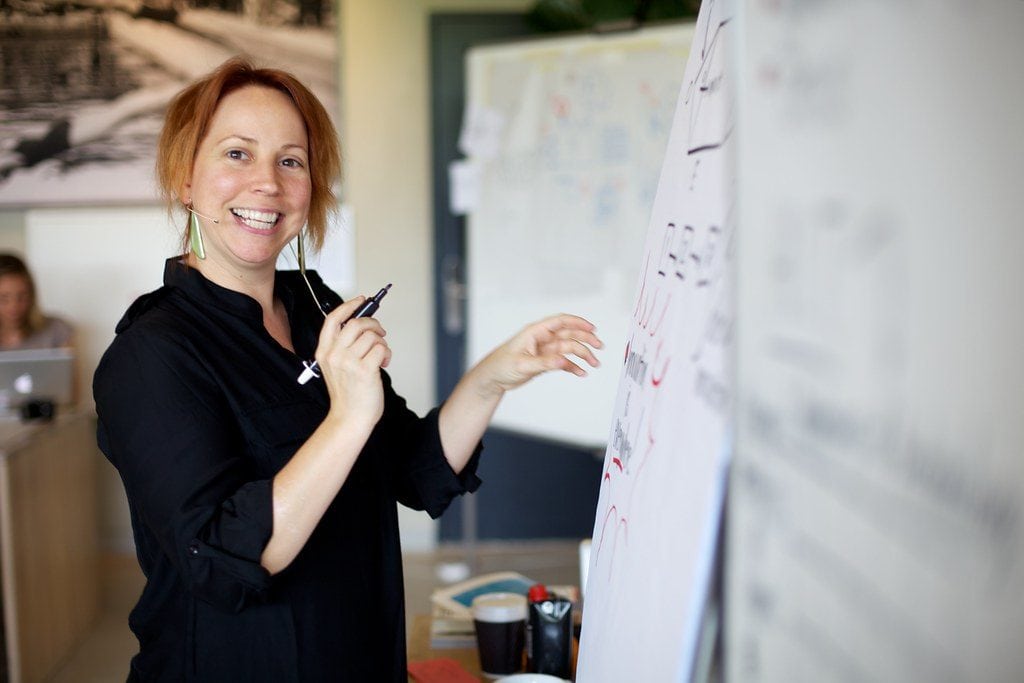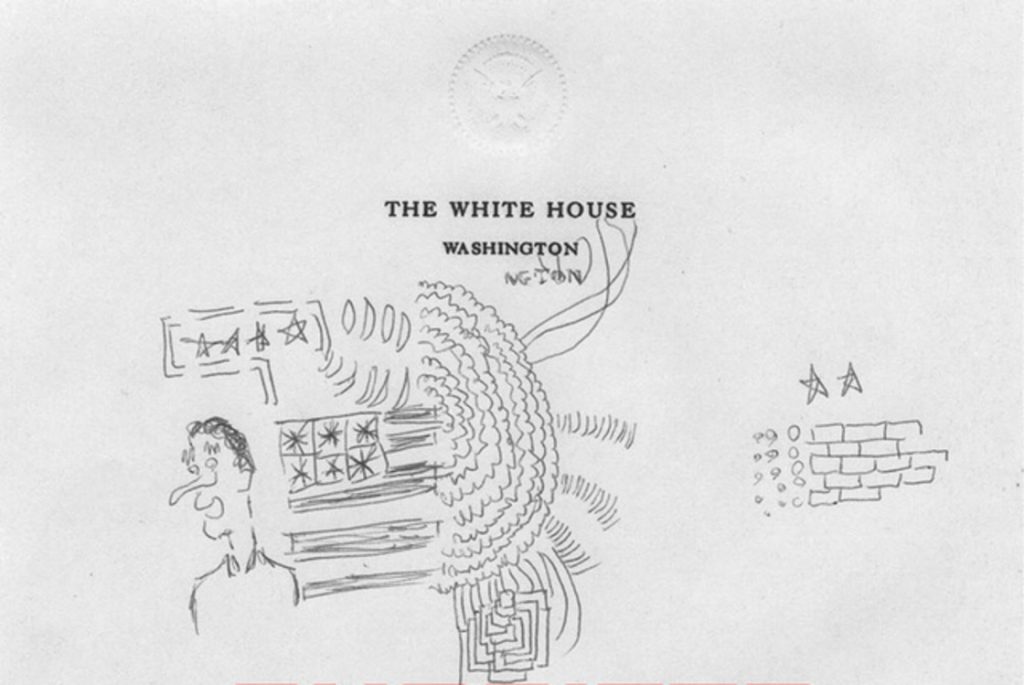An arrow, a cube, a flower… which one are you? When it comes to the world of doodles, your favourite meeting-time meanderings might say a lot about what’s going on inside your head. And don’t let anyone make you think doodling means you’re not concentrating—as you’ll see shortly, it’s quite the opposite.
The word ‘doodle’ has more than one origin, and unfortunately none of them are particularly complimentary. Depending on where you look, doodle is either derived from the German ‘dudeltopf’ or ‘dudeldop’, which mean ‘simpleton’ or—even worse—‘noodle’. It could also come from the early 18th century verb ‘to doodle’, which means to swindle or make a fool of. Again, not great. Nor is the idea that doodle might come from ‘dawdle’. It is only thanks, in part, to 1930s scriptwriter Robert Riskin that the word ‘doodle’ has emerged with somewhat more forgiving connotations. In his film ‘Mr Deeds Goes to Town’, one character is referred to as a ‘doodler’, which, it is explained, is “a name we made up back home to describe a person who makes foolish designs on paper when they’re thinking.”
Upward arrows are associated with optimism, drive and ambition. Downward arrows are not so good—they might show pessimism and anxiety.
So, foolish as a doodler’s designs may be, not only are they indicative of thinking, but they can also be responsible for sprouting creativity and problem-solving. Sunni Brown, founder of SB Ink, a US-based creative consultancy, is so adamant about the power of doodling that she wrote a book—‘The Doodle Revolution’—and gave a TED talk about the subject.
“I spend a lot of time teaching adults how to use visual language and doodling in the workplace, and naturally I encounter a lot of resistance,” she says in her TED talk. “It’s sort of considered to be anti-intellectual and counter to serious learning, but I have a problem with that belief because I know that doodling has a profound impact on the way that we can process information and solve problems.”
Equally disgruntled by the definitions, Brown goes on to redefine the term ‘to doodle’ as “to make spontaneous marks to help yourself think.” She also refers to studies that have proven people who doodle when they’re exposed to verbal information retain more of that information than non-doodlers.
“We think doodling is something you do when you lose focus,” Brown says, “but in reality it is a pre-emptive measure to stop you losing focus.”

Basically then, doodling is a way of preventing your brain slipping into that half-sleep mode it’s prone to during particularly long meetings.
In terms of what it says about your character and present state of mind, doodling can be very revealing and even therapeutic. What you choose to draw is often a subconscious and ‘automatic’ process in that you’re not putting an awful lot of thought into it. Freud loved this stream-of-consciousness stuff and analysed it to death, and some of it is contentious and fantastical, but there’s no doubt your doodles can potentially reveal intriguing things about your psyche.
I of the tornado…
Let’s have a look at five of the more common doodles and what that might say about you:
Arrows—Upward arrows are associated with optimism, drive and ambition. Downward arrows are not so good—they might show pessimism and anxiety.
Flowers—Indicative of a gentle, passive or even fragile nature. The type of flower—open or closed, multiple petals, alive or drooping—can also reveal the doodler’s state of mind.
Three-dimensional shapes—Order, structure, logical thinking. Someone who draws a lot of these will likely be quite analytical and conscientious. Stacked boxes could be an expression of feeling overwhelmed.
Houses—Sense of security, both inward and outward. A neat, symmetrical house with, say, a nice garden and smoke coming from the chimney is the sign of a happy, fulfilled mind. A crumbling façade and skew or broken windows is, as you can guess, a symbol of angst and worry.
Spirals and tornadoes—Often drawn by introverts, far from illustrating inner-tumult, they are more likely signs of someone who is calm and comfortable with themselves and spends a lot of time in their head, solving problems.
You’re in good company…
Here’s another excuse to flagrantly doodle—some of the greatest minds in history have been prolific doodlers. From Leonardo Da Vinci, John Keats and Fyodor Dostoevsky to Hillary and Bill Clinton, Dwight D. Eisenhower, Ronald Reagan, John F. Kennedy, there are plenty of self-professed doodlers who have made a significant impact on the world, sometimes while actually doodling (see pictures). And two of the most famous mathematicians in history—Stanislaw Ulam and Pierre de Fermat—both solved extremely complicated mathematical problems via hours of doodling.

So if you’re ever doodling in a meeting and you’re on the receiving end of a disapproving look from the non-doodler next to you, we suggest you direct them to this article.
- What do you doodle? Do you think it says something about your personality?
